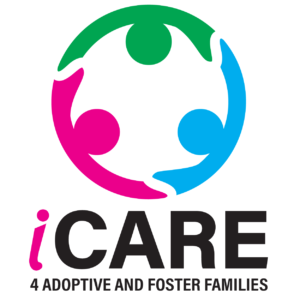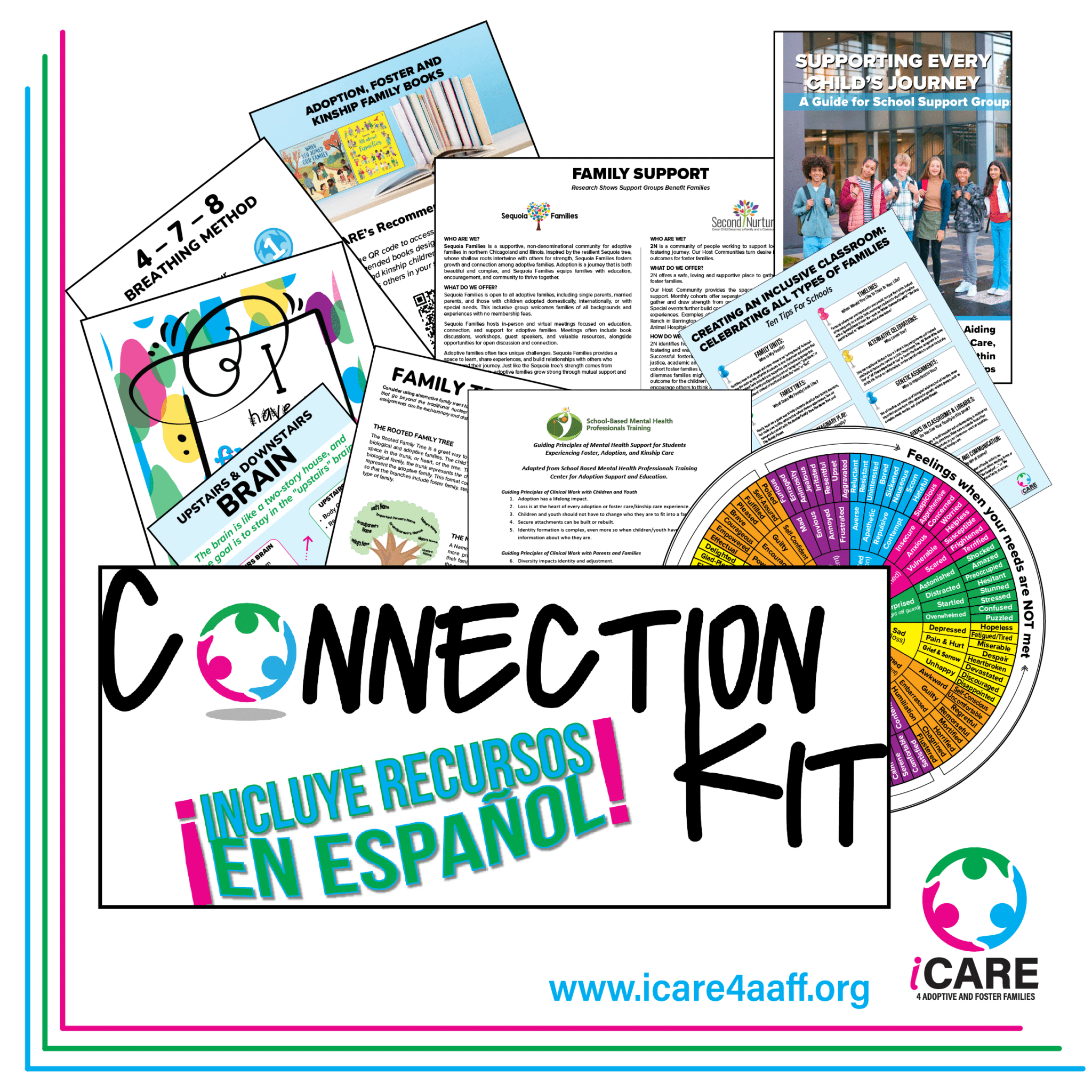
From Placement to Partnership: A Family Systems Approach to School Support
At iCARE, we witness daily the unwavering commitment of school professionals who serve as frontline responders for students facing trauma, transition, and loss. For children in adoptive, foster, and kinship families, school can be both a stabilizing force and a trigger for deep emotional needs. These students carry complex stories—rooted in adversity, but also in remarkable resilience.
What if schools could become not just places of learning, but true partners in healing?
One model we can look to for inspiration is already working well in another part of the child-serving system: Child and Family Team Meetings (CFTMs) in the Illinois Department of Children and Family Services (DCFS). CFTMs offer a structured, strengths-based way to bring caregivers and professionals together to make thoughtful, well-rounded decisions about a child’s well-being. And they offer a great example of how schools might build on their existing strengths to enhance support for students in adoptive, foster, and kinship care and can work within the existing legal framework for support.
Topics for May 2025
The Transition Into Permanency Is Just the Beginning
When a child joins an adoptive or kinship family, it marks a powerful milestone—but it’s not the end of the journey. In fact, true healing often begins after placement, as deeper emotional needs surface in the safety of a permanent home and consistent school routine.
Unfortunately, formal support systems often end at permanency, just when families need them most. Without continued connection and guidance, children risk falling through the cracks. Schools that embrace a family-centered approach can provide the sustained support needed for children to grow, heal, and succeed.
If we believe that every child deserves permanency with loving parents—and we rightly value, train, and involve those parents while the child is in foster care—then that same value should carry forward once the child is adopted or in a guardianship or kinship arrangement. The need for partnership doesn’t end with permanency; in many ways, that’s when it matters most. Caregivers continue to be essential allies in helping children heal, regulate, and succeed in school, and they deserve to be seen and supported as such.
By using the CFTM model as a guide, schools can implement a structure that encourages shared responsibility, open communication, and continuity of care—creating a more responsive and healing-centered environment for every child. That’s why continued support matters so much—and why schools play such a vital role in walking alongside children and families through that next chapter.
Learning from What Works: Child and Family Team Meetings (CFTMs)
In the child welfare system, CFTMs are used to ensure every child has a plan that reflects their strengths, needs, and relationships. These structured meetings bring together caregivers, caseworkers, service providers and the child to create a coordinated plan that supports long-term safety, well-being, and success. CTFMs are mandated as they are critical to a child’s support and healing. They provide a more accurate, trauma-informed understanding of behavior to prevent misinterpretations of behavior, consistent and aligned supports across home and school and stronger caregiver-school relationships that foster trust and teamwork.
Some of the key features of CFTMs include:
- Teamwork: A shared understanding between caregivers and professionals
- Strengths-based planning: Focused on what’s working and how to build on it.
- Regular check-ins: To adjust plans and keep communication open.
- Inclusion of the family voice: Making sure caregivers are partners in the process.
These practices have led to better outcomes in child welfare—and many of them already echo what strong school teams do every day. What if we simply connected those dots more intentionally?
Bringing the CFTM Spirit Into Schools
Many school teams are already meeting regularly to support students through MTSS, 504s, and IEPs. But only around 10% of kids fall under those umbrellas. For children in adoptive, foster, and kinship families, layering in some of the principles from Child and Family Team Meetings (CFTMs) could make those supports even more effective—especially when it comes to coordination with caregivers and creating consistent strategies across home and school.
In fact, the Illinois School Social Work Best Practice Ethics Guide emphasizes that a truly effective Social Developmental Study must include a holistic assessment of the child—one that incorporates a parent or caregiver interview conducted in a safe and welcoming environment. If we recognize that this level of insight is vital to understanding and supporting a child’s development, then it shouldn’t be reserved for a few. It must be the standard—afforded to all
A family systems approach for adopted and kinship children in schools could include:
- Inviting caregivers into planning meetings early and often, even outside of formal special education processes.
- Creating time for collaboration between school staff, families, and any involved service providers.
- Approaching behavior and emotional needs through a trauma-informed lens that considers the child’s full story.
- Celebrating progress and resilience, not just addressing concerns.
This kind of approach doesn’t require new resources—it builds on existing strengths and structures, while bringing caregivers into closer partnership with the school team. It’s in the best interest of the child and imperative to support the child’s sense of belonging within their new family unit—something that’s foundational to healing, development, and long-term stability.
Why This Matters for Long-Term Success
When school teams and families work closely together, children feel more supported, understood, and secure. This is especially important for children who have experienced attachment trauma—the kind of relational wounds that come from early disruptions in caregiving, loss, or instability. These children may struggle with trust, emotional regulation, or feeling safe in relationships, even long after they’ve entered a permanent home.
Consistent, caring communication between school and home helps build the predictability and trust that these children need to thrive. When caregivers are included as partners and their insights are valued, schools gain a fuller picture of each child’s history and healing journey. In turn, children are more likely to stay engaged in learning, build stronger peer relationships, and experience fewer behavioral challenges.
By adapting practices like CFTMs for the school environment, we’re simply extending what we know works. It’s a way to create relational consistency across systems, reinforce strong partnerships with families, and ensure that children continue to receive thoughtful, coordinated support as they grow—especially when their needs may shift over time. For children with attachment trauma, this kind of connected, team-based approach can be foundational to their long-term sense of safety, belonging, and success.
Working Within the Legal Framework:
What Schools and Mental Health Providers Can Do
We understand that school staff and service providers often navigate complex legal and procedural boundaries—especially when it comes to involving families in care and decision-making. One example is Illinois Mental Health Code 405, which allows school-based mental health providers to see a student without parental notification for up to 8 sessions of 90 minutes each—or a total of 12 hours. While this provision can be beneficial in building initial rapport, support and addressing immediate needs, it’s often misunderstood or misapplied broadly for all children’s support. In reality, this law does not preclude collaboration—and failing to involve families can unintentionally cut off essential sources of insight, context, and support.
Here’s the good news: Nothing in the law prevents schools from being more inclusive, collaborative, or trauma-informed. We can support a child’s right to confidential conversations and provide holistic, family-centered care. In fact, doing so often improves outcomes for students who have experienced separation from a caregiver or displacement from home.
1. Understanding the Child’s Full Context
Even within the first 12 hours of service, there are powerful, legally sound ways to learn more about a child’s living situation, support system, and emotional needs—without jumping to conclusions or making isolated decisions.
- Ask exploratory, open-ended questions:
“Who do you live with?”
“Who are the important adults in your life?”
“What’s your family like at home?”
These questions help professionals begin to understand the child’s attachment network and current environment. - Recognize key flags for deeper involvement:
If a child shares that they are adopted, have been in foster care, or are living with a relative, that should prompt further consultation. These family systems are often layered with transitions, grief, and resilience—and can carry ongoing developmental implications. - After a few initial sessions, involve the caregiver:
Once rapport is built, reaching out to parents or guardians after two or three sessions is not only allowed—it’s best practice. They can offer critical medical, developmental, and relational history that shapes a more effective and accurate plan of support.
2. Slow Down Before Drawing Conclusions
Children with complex early experiences may present in ways that are easily misinterpreted—especially if you’re working in isolation. That’s why we recommend:
- Gathering broader input before labeling or diagnosing:
It’s important to avoid pathologizing what might be normal trauma responses. Get insight from the family, past clinicians, or others who know the child over time and across contexts.
3. Become familiar with best practices and core principles:
Adoption and trauma-informed care are specialized areas. Before making key decisions about support, learn more about frameworks like:- The Seven Core Issues in Adoption and Permanency (Silverstein & Kaplan)
- The National Adoption Competency Mental Health Training Initiative (NTI) – NTI Training
- Trust-Based Relational Intervention (TBRI)
- The Six Stuck Spots for Adopted Teens, from Beneath the Mask: Understanding Adopted Teens by Debbie Riley & John Meeks
Avoid assumptions of dysfunction:
Many adoptive, foster, and kinship families are thriving—and most will face unique parenting and regulatory challenges rooted in the child’s early experiences, not current family dynamics. The goal is not to “fix” the child or scrutinize the caregiver—it’s to build a team that works together toward stability and healing.
A Shared Commitment
We know schools care deeply about their students and want what’s best for them—not just academically, but socially and emotionally. For students in adoptive, foster, and kinship care, a family systems approach grounded in collaboration can make all the difference.
At iCARE4 Adoptive And Foster Families, we’re here to support that work. Whether it’s offering training, sharing tools, or simply starting the conversation, we believe that together, we can create school communities where all children—and their families—feel seen, supported, and set up for long-term success.

